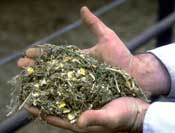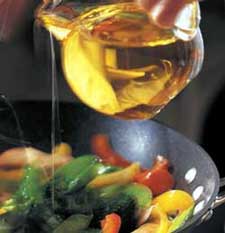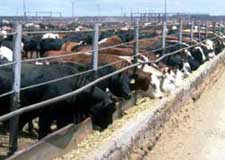
Cotton actually is two crops, fiber and seed. About one-third of the cottonseed
 produced from a typical crop is crushed for oil and meal used in food products and in livestock and poultry feed.
produced from a typical crop is crushed for oil and meal used in food products and in livestock and poultry feed.
For each 100 pounds of fiber produced by the cotton plant, it also produces about 162 pounds of cottonseed. Approximately 5 percent of the total seed crop is reserved for planting; the remainder is used for feeding as whole seeds or as raw material for the cottonseed processing industry.
After being separated from the lint at the gin, the cotton’s seed is transported to a cottonseed crushing mill. There it is cleaned and conveyed to delinting machines which, operating on the same principle as a gin, remove the remaining short fibers which are known as linters. The linters go through additional processing steps before being made into a wide variety of products ranging from mattress stuffing to photographic film.
 After the linters are removed, the seed is put through a machine that employs a series of knives to loosen the hulls from the kernel. The seeds are then passed through shakers and beaters. The separated hulls are marketed for livestock feed or industrial products, and the kernels are ready for the extraction of oil, the seed’s most valuable by-product. Solvent extraction or presses remove the oil. After further processing, the oil is used in cooking or salad oil, shortening and margarine. Limited quantities also go into soaps, pharmaceuticals, cosmetics, textile finishes and other products.
After the linters are removed, the seed is put through a machine that employs a series of knives to loosen the hulls from the kernel. The seeds are then passed through shakers and beaters. The separated hulls are marketed for livestock feed or industrial products, and the kernels are ready for the extraction of oil, the seed’s most valuable by-product. Solvent extraction or presses remove the oil. After further processing, the oil is used in cooking or salad oil, shortening and margarine. Limited quantities also go into soaps, pharmaceuticals, cosmetics, textile finishes and other products.
The remaining meat of the kernel is converted into meal, the second most valuable by-product. High in protein, it is used in feed for all
 classes of livestock and poultry.
classes of livestock and poultry.
Cottonseed meal makes an excellent natural fertilizer for lawns, flower beds and gardens.

